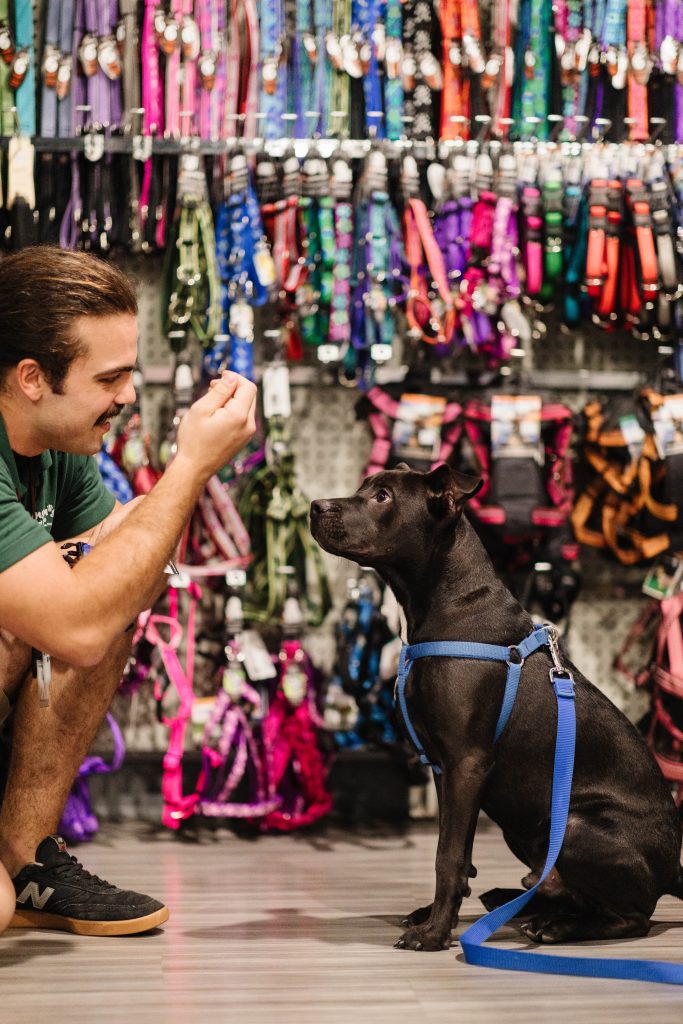Putting the Wind In Your Sails

Nourishing children’s confidence through an immense educational ocean.
When Chris Leuzinger left Western Canada for Taiwan, he didn’t know his one-year contract to teach at a private school would turn into four of the best years of his life.
“I was having the time of my life, so why would I leave?” he said. “I figured out I loved teaching while I was doing it.”
Chris has been on a voyage of discovery ever since. A proponent of education in all forms, in 2014, he and his wife, Lauren, became co-pilots of Nourishing Minds Tutoring, a ship of scholars guided by a crew of professionally-trained educators— which has grown to as many as 21 during demand peaks— riding the waves of education.
In a Sea of Possibilities…
When Chris did leave the Far East, he took a fantastic four-month voyage through Africa, from Kenya to Johannesburg, South Africa. Following that journey, he spent a year in New Zealand earning his Graduate Degree in Primary Education.
After graduation, he would fly back across the globe yet again to begin a six-year “stay” in London from 2009 to 2014. While in London, he began teaching at a poorly-performing inner-city school in one of the worst areas of the city. When Chris arrived, his school ranked among the bottom 5% in the county; by the time he left, they had risen to among the top 10%.
“True magic can happen when you have higher expectations. Kids rise to the challenge.”
Chris Leuzinger, Founder of Nourishing Minds
During his six years in the United Kingdom, he would transition from teaching into administrative positions. Working as an educational consultant, he helped build teaching standards, curriculum, and professional development training for other schools. While some of these schools were also in England, others were as far off as Spain, Norway, and Trinidad & Tobago.
Chris would spend some time in each of these places as well, adding to his already impressive collection of stamps on his passport.
…A Compass Rose
Now in 2014 and back in the US, Chris and Lauren decided to make their home in Lauren’s native hometown of Saratoga Springs. The couple would then use their experience to navigate effectively through the challenge of starting Nourishing Minds Tutoring from scratch. They hit the streets and got the word out (through spots like Northshire Bookstore) then let their work speak for itself.
“That we’ve grown to this point almost 100 percent from word-of-mouth, tells me people are happy and satisfied with what we’re doing – We must be doing something right,” said Chris.
Now, Chris and Lauren (a Special Education teacher working on her second Master’s Degree) have three children; Taylor, 9, Brady, 6, and Layla, 4. They have also had the experience of nurturing a student who was struggling through 3rd grade all the way to earning an academic scholarship to a prestigious university.
“When you choose to invest in tutoring, you recognize that it is a long-term investment,” said Chris, adding, “But, I cannot guarantee grades. Learning doesn’t work that way.”
Taking the Helm
Making education come alive through engaging, real – world applications, kids are learning without realizing they’re learning – and without having to sit at a desk all the time, said Chris.
Nourishing Minds Tutoring utilizes both formative and summative assessments to gauge student learning. Using summative (or standardized) forms of testing when beginning to work with a student, they arrive at a launch point. Formative assessments monitor progress, further gauging learning through work samples, essays, and teacher evaluations over time.

Navigating Rough Waters
New and varied approaches to education like these are becoming popular because as technology helps inform our experience, research indicates traditional methods are failing children. Homeschooling is on the rise and the online tutoring services market is expected to reach $23.73 billion by 2030.1
Whether students are failing to meet age-based expectations or are excelling beyond them, Nourishing Minds provides students with the individualized support and resources they need, while also contracting with school districts to help supplement home instruction.
Climbing the Rigging
Through creative, personalized approaches, Nourishing Minds tutors teach relevant standards- based curriculum in a way that students respond to.
Growing up petrified of math, Chris had the mentality that he just “wasn’t good at it” and “couldn’t do it.” Then, Chris learned math could be more than the flashcard memorization method he was taught as a child. Now, math is Chris’ favorite subject to teach.
“Common core was crucified in the media but I sing its praises,” he said. “When I was growing up, there was one way to do it, and that was it. Common core teaches kids a variety of ways a lot of parents and teachers never learned themselves and that helps so many kids.”
Full Speed Ahead
While the Capital District continues to experience a shortage in Occupational, Physical, Speech, Language, and Musical Therapists, Nourishing Minds Tutoring contracts to supplement education with school districts while also offering private and group tutoring, both in-home and online. They switched to an entirely virtual model during five months of the pandemic, but now exist as a hybrid.
“Homeschooling can be done in many, many ways, and you’re pretty free to do what you want. It’s a lot more doable and accessible than people think it is,” said Chris.
In New York State, homeschooling families are required to develop an Individual Home Instruction Plan (IHIP) adhering to the 100.10 Standards on Home Instruction.2
Socialization can be accomplished in a variety of ways today, too, Chris stresses. By participating in sports, extra-curriculars, volunteering, and getting a part-time job, children learn socialization skills while also building confidence – which is key.
“To me, success in one aspect of life translates to success in another,” said Chris.
Living by example, Chris volunteers 2,000 hours per year as the Assistant Chief of the Wilton Fire Department, and serves on the board of the Cantina Fun Run.
“There’s power in getting together as a community and helping.
Find a way to get involved, something you care about, and make the world a better place,” said Chris.
For more information, go to NourishingMindsTutoring.com
1 https://finance.yahoo.com/news/online-tutoring-services-market-worth-100000126. html
2 https://www.nysed.gov/curriculum-instruction/10010-home-instruction








